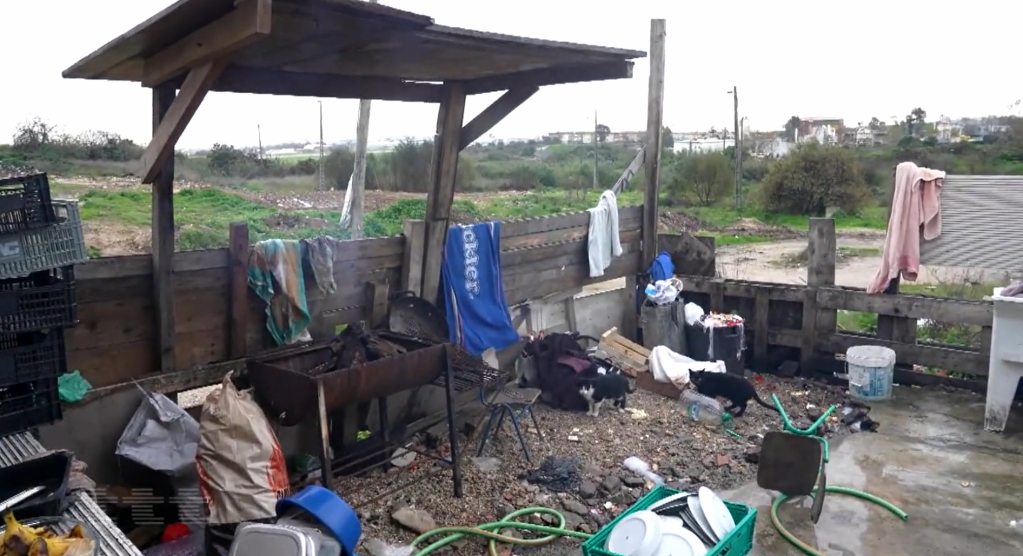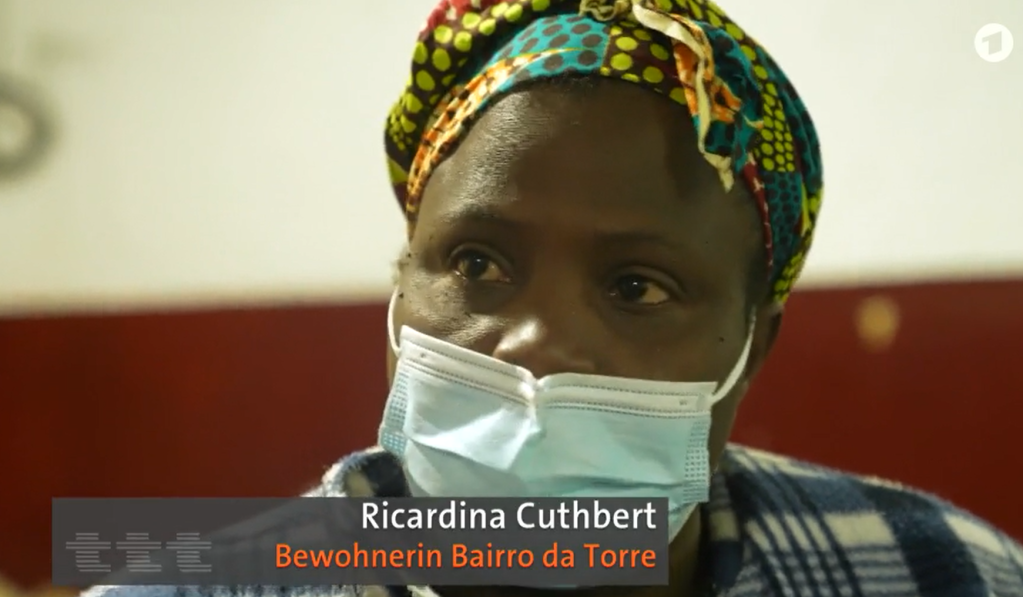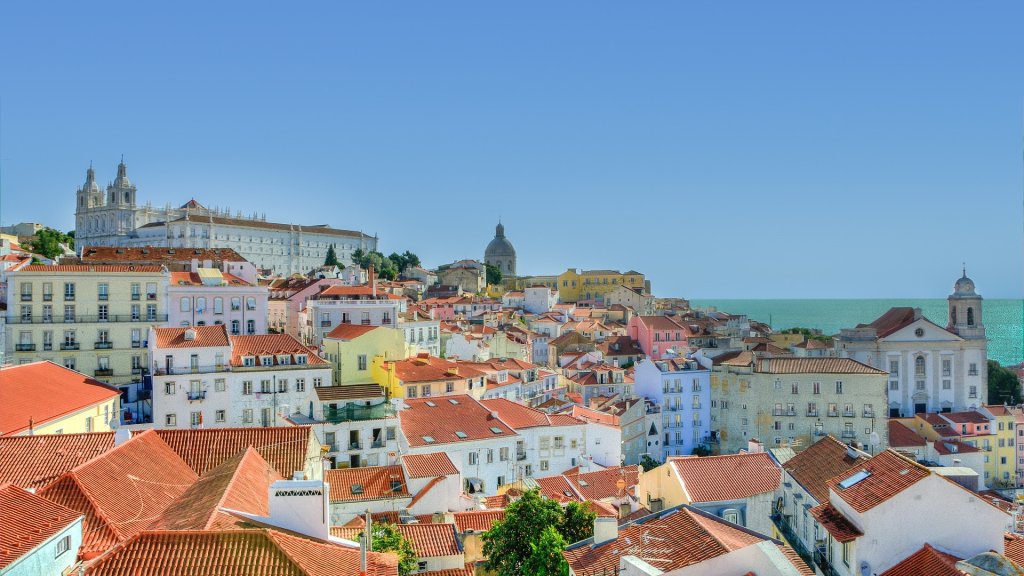Migrants in Portugal, especially undocumented migrants, have been hit by a boom in tourism and gentrification. A Portuguese photographer has documented their plight in Lisbon when they are forced to move into abandoned buildings on the outskirts of the capital.
Before the outbreak of the coronavirus pandemic, the Portuguese capital, Lisbon, was one of the boomtowns of the global tourism industry. Between 2006 and 2019, the number of tourists coming to the European country roughly doubled.
While tourism was one of the key industries that fueled Portugal’s recent economic growth, it also had a negative impact on the poorest locals and immigrants, who often have poorly paid jobs.
Since the masses of tourists began to arrive, entire districts with thousands of houses have been renovated and converted into holiday apartments, forcing many to leave because they could no longer pay the rent. For many, slum-like housing on the outskirts of the city is the only viable option.
The Portuguese photographer Gonc̜alo Fonseca has documented their plight. His photo series “New Lisbon”, for which he recently won the prestigious Leica Oskar Barnack Award, shows people who have had to leave their homes, become homeless or have been driven to the periphery due to property speculation and gentrification.
Portugal’s colonial past
The Portuguese Empire, which stretched across the world and lasted almost six centuries, comprised several colonies in Africa: Angola, Mozambique, Guinea-Bissau, Cape Verde, São Tomé and Príncipe, and Equatorial Guinea.
The countries with Portuguese as the official language in Africa are designated with the acronym PALOP (Portuguese-speaking African countries) and include Angola, Cape Verde, Guinea-Bissau, Mozambique and São Tomé and Príncipe | Source: Wikipedia
Angola, Mozambique and Guinea-Bissau gained independence from Portugal in the 1970s after long and bitter counterinsurgency conflicts from the 1960s to the mid-1970s.
Today, some of the biggest real estate investors in Lisbon are wealthy Angolans. At the same time, immigrants from the former colonies are particularly affected by the restructuring of the city.
Many poorer migrants were displaced from the city center to the periphery long ago, to places like Bairro da Torre (“Tower District”), which has become a place of arrival and refuge for people who emigrated to Portugal from their former colonies.
 The Portuguese photographer Gonc̜alo Fonseca photographs an immigrant in Lisbon Photo credit: Screenshot of the ARD episode “titel, thesen, temperamente” from January 10, 2021
The Portuguese photographer Gonc̜alo Fonseca photographs an immigrant in Lisbon Photo credit: Screenshot of the ARD episode “titel, thesen, temperamente” from January 10, 2021 Black people in Lisbon | Photo credits: Screenshot of the ARD episode “titel, thesen, temperamente” from January 10, 2021
Black people in Lisbon | Photo credits: Screenshot of the ARD episode “titel, thesen, temperamente” from January 10, 2021 Living in the Bairro da Torre district of the Portuguese capital, Lisbon
Living in the Bairro da Torre district of the Portuguese capital, Lisbon Ricardinia Cuthbert, lives in Lisbon’s Bairro da Torre | Photo credits: Screenshot of the ARD episode “titel, thesen, temperamente” from January 10, 2021
Ricardinia Cuthbert, lives in Lisbon’s Bairro da Torre | Photo credits: Screenshot of the ARD episode “titel, thesen, temperamente” from January 10, 2021
Previous next
“Four years without electricity,” said Ricardina Cuthbert, who comes from the Atlantic island state of São Tomé and Príncipe, opposite the German public broadcaster ARD. “This is the struggle for life. What is a house about? It’s about the life inside.”
The Airbnb curse
Foreign investors have also shown interest in Cuthberth’s house, but the migrant says she won’t move. “They won’t get me out of here. It’s a poor house, but it’s mine.”
Photographer Fonseca partly blames the Airbnb industry for the massive rise in rental prices. Despite its small population of just over ten million, Portugal is the tenth most important Airbnb market in the world with around 3.4 million Airbnb tourists in 2018.
A 2018 study estimated that every third property in central Lisbon was vacation rental, pushing local people to the outskirts as rental rates rose 9.3% that year.

A picture of the Portuguese capital Lisbon Photo: Pixabay
“Many who could no longer afford rent became squatters,” Fonseca told ARD. “I don’t want your stories to be forgotten or to disappear in the dark behind the house fronts.”
The plight of undocumented workers
In a move that pleased migrant-friendly organizations, the Portuguese government decided to do so in late March Temporarily treat all foreigners who have been waiting for their asylum, residence or work permit applications to be processed as permanent residents.
However, this measure did not help everyone. Similar to neighboring Spain, where a fire recently broke out in an abandoned warehouse near Barcelona four African migrants diedPortugal has a massive problem with undocumented migrants.
It could be “tens of thousands” of undocumented workers, including migrants falling through the cracks. These people do not have access to social assistance because they do not have a legal employment contract. They move deeper into poverty as the economic impact of the COVID-19 pandemic is felt.
It is unknown how many people had pending residency requests, but government statistics show that there was a record 580,000 immigrants living in Portugal in 2019, with 135,000 granted residency last year.
According to the Financial Times, the Portuguese immigrant population has more than doubled in the past 20 years. Official data shows that Brazilians make up the majority of immigrants living in Portugal, followed by Romanians, Ukrainians, British and Chinese.
EU asylum policy talks
Earlier this month Portugal has started talks with other EU member states on the asylum and migration pact proposed by the bloc. The goal of the Portuguese Ministry of the Interior is to find common ground and overcome differences.
The talks will be part of Portugal’s six-month rotating EU presidency, which the country took over from Germany in January.
Talks about the asylum and migration pact began in September and have already reached various sticking points. Most of the time, Mediterranean countries like Italy and Greece ask that other Member States take in some of the people who arrive in particularly large numbers.
Still other EU countries such as Poland and Hungary reject any voluntary commitment to accept migrants. However, Portuguese Interior Minister Eduardo Cabrita said he would hold meetings with reluctant countries.
According to the minister, “flexible” but “compulsory solidarity” between the EU countries is the key concept that Portugal is pushing for. He needs to find solutions to two main problems: regular migratory flows and migratory crises, he added.
However, Cabrita said it was unclear what that solidarity would look like. It remains to be seen whether and how the bloc can find this elusive consensus for a common EU migration policy.
With dpa, Reuters, AP, ARD
